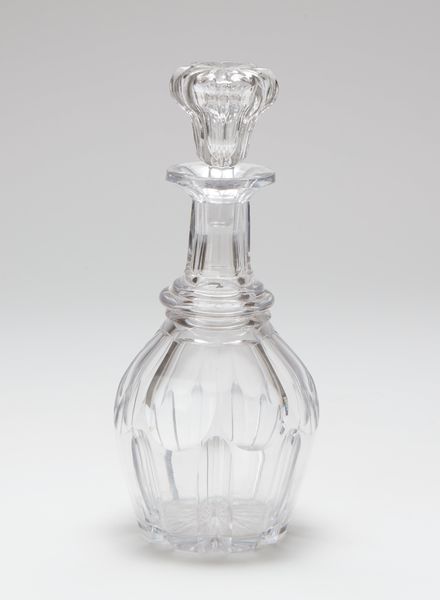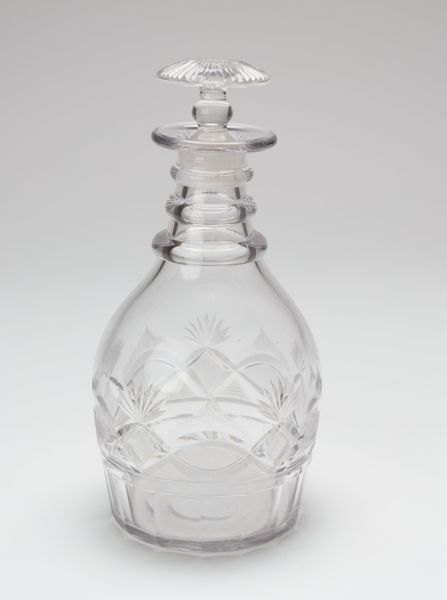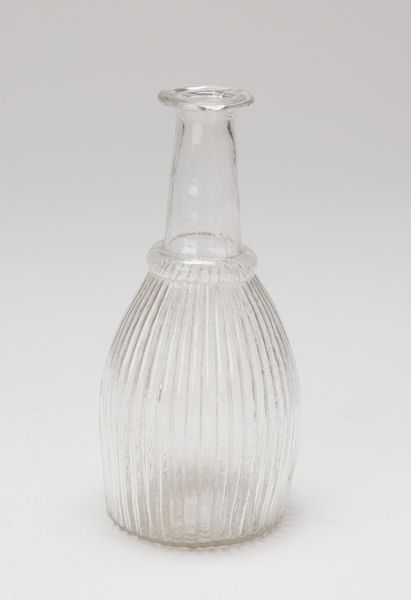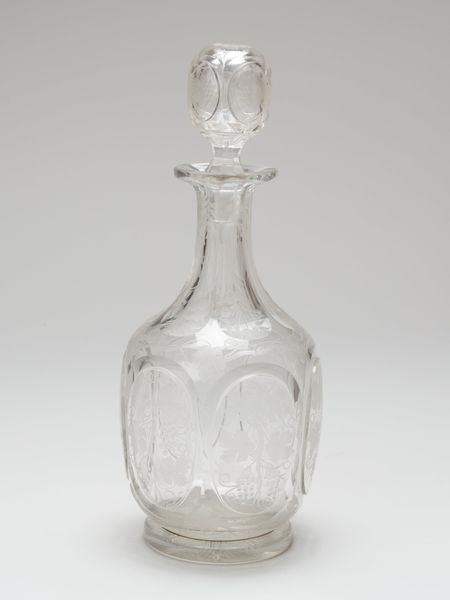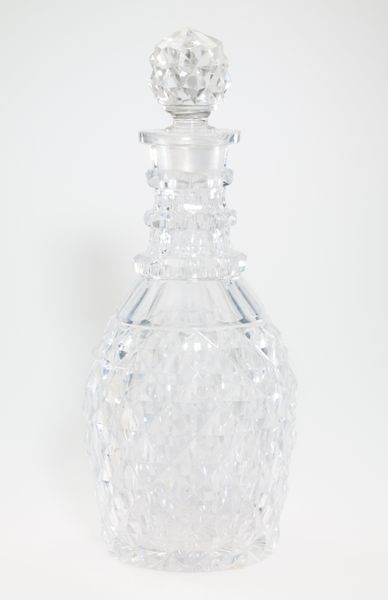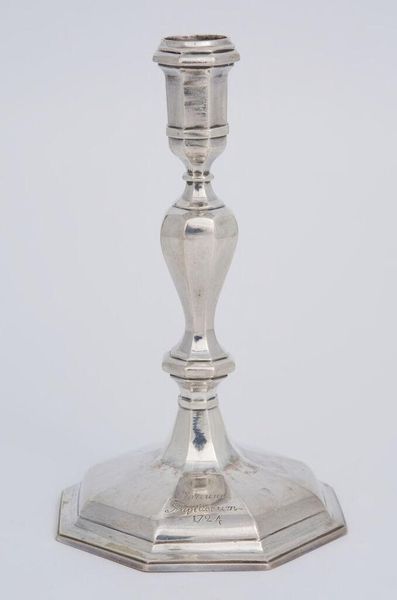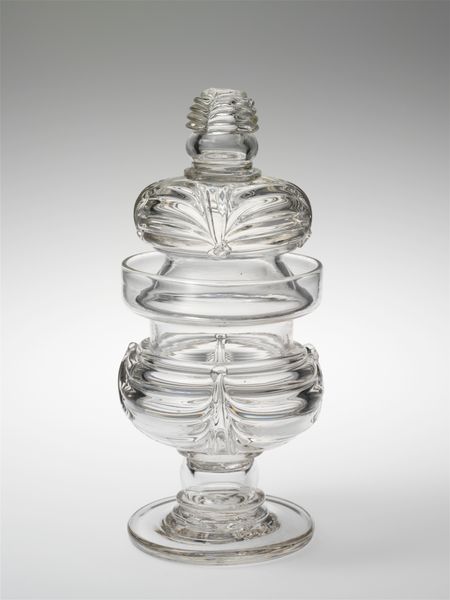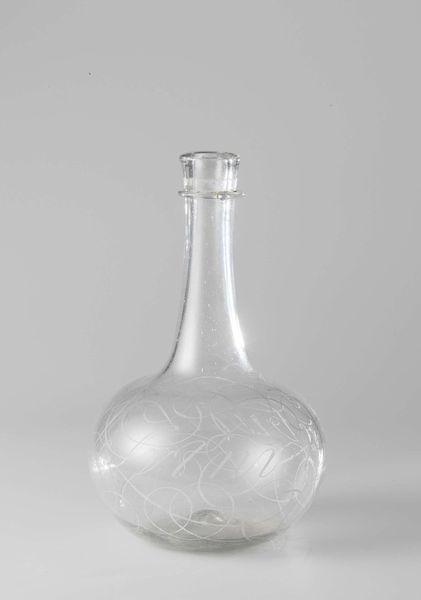
ceramic, glass
#
ceramic
#
glass
#
ceramic
#
decorative-art
Dimensions: 9 1/4 x 4 x 4 in. (23.5 x 10.16 x 10.16 cm) (including stopper)
Copyright: Public Domain
Editor: This is a stoppered decanter, made of glass, dating from the 19th century. It's a striking example of decorative art here at the Minneapolis Institute of Art. I’m immediately drawn to its pristine clarity and geometric faceting. How do you interpret the design, given its historical context? Curator: Looking at this decanter, I see echoes of 19th-century aspirations to elevate everyday life. The clear glass speaks of purity, even luxury. And that intricate geometric design, almost like a faceted jewel, what does it evoke for you? Editor: A sense of order, perhaps. Almost mathematical in its precision. Is that common for the period? Curator: It’s reflective of the period's fascination with precision and ornamentation, which found its way into even utilitarian objects. These weren’t just containers, you see; they were expressions of status, refinement. Consider how light would play on those facets. Think of the cut crystal’s brilliance under candlelight. What kind of symbolism do you associate with displaying prized possessions so prominently? Editor: It shows both value of contents, but also shows status and control of the domestic space? Almost like, “look at what I can afford, admire how far I’ve come”. Curator: Precisely. Even an object so seemingly simple embodies layered social and cultural meanings. Consider it within the larger framework of 19th-century social rituals, of dining, display, and perhaps, a certain performative elegance. Editor: That gives me a completely different perspective on it, realizing how much it speaks to status and aspiration, not just function. Curator: And how even the smallest detail can whisper stories of an era.
Comments
No comments
Be the first to comment and join the conversation on the ultimate creative platform.


